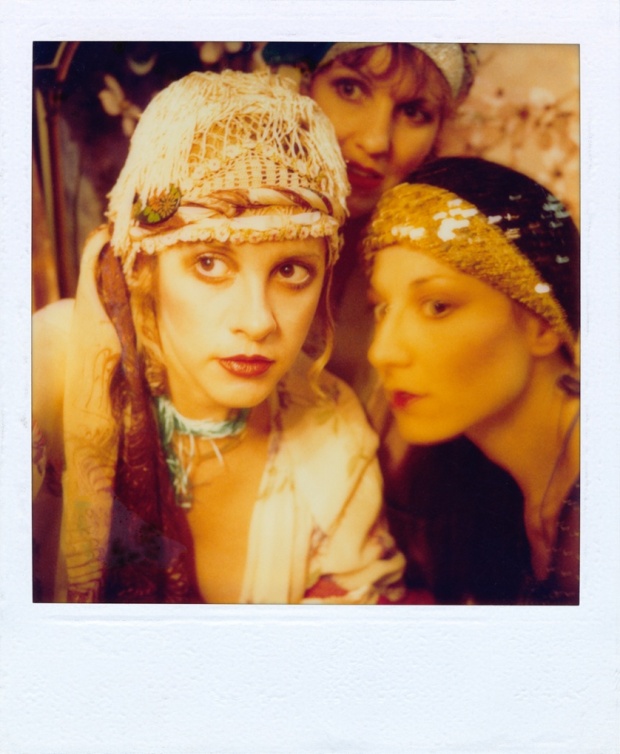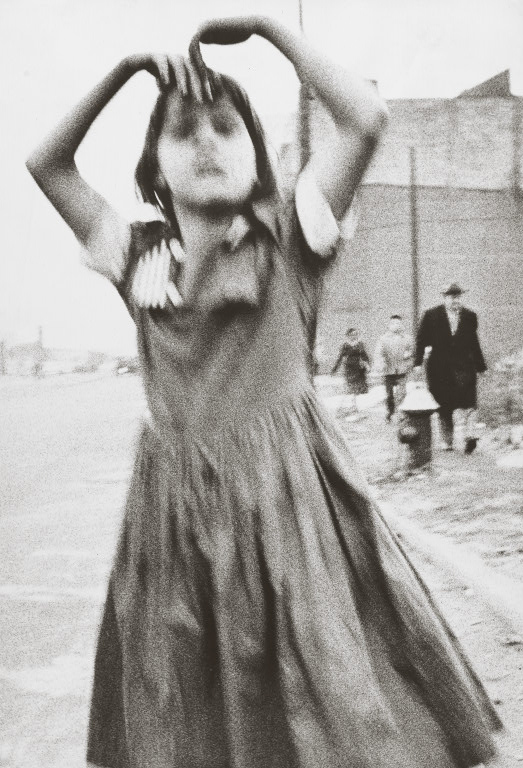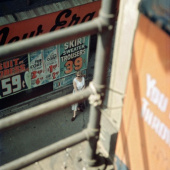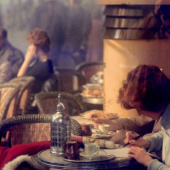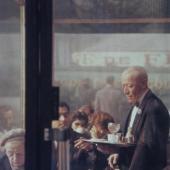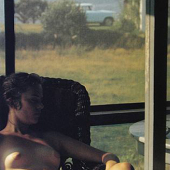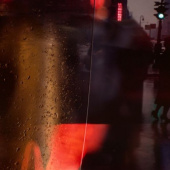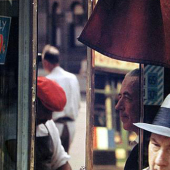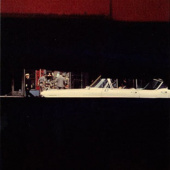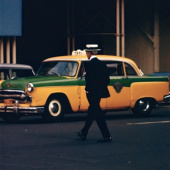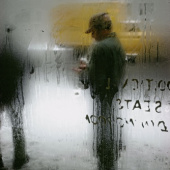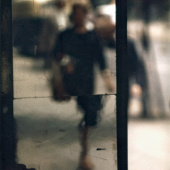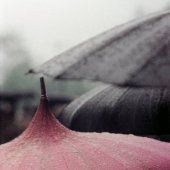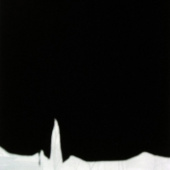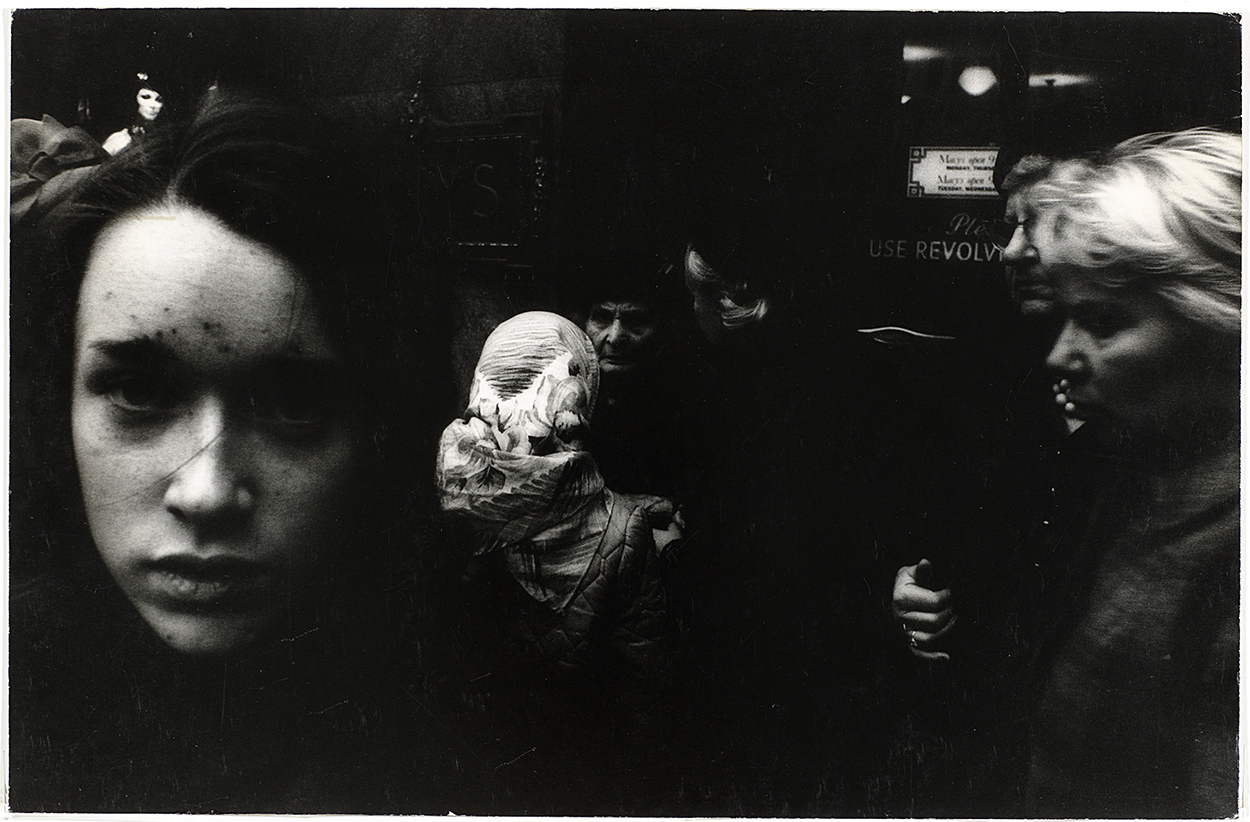
Big Face, front of Macy’s, New York.
posted under: new york
saul leiter: in no great hurry
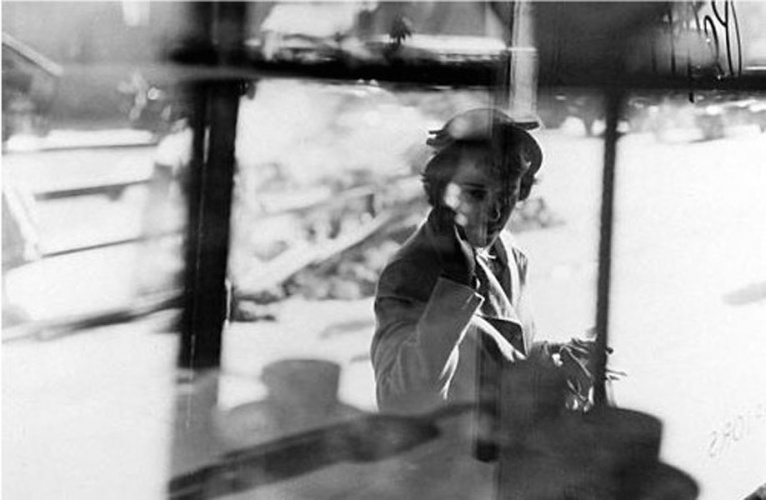
Exacta, 1948, Saul Leiter
I’ve just watched In No Great Hurry: 13 Lessons in Life with Saul Leiter, a 2013 documentary by Tomas Leach. Understated and quiet, the film follows Leiter around his life, self-consciously walking the line between wanting to get closer to the man and the artist while not wanting to be intrusive — a tension that runs through the film and gives a tentative, hesitant feel to the camera work and Leach’s side of the conversation. Leach’s awe of Leiter was palpable in the film and understandable — but it sometimes got in the way of his filmmaking; it was visible in his choices to the point that it narrowed Leiter’s story and the viewer’s experience of it.
Most of the film was shot in Leiter’s studio in the East Village, where he’d lived since 1952, and cuts between Leiter speaking to the camera, making coffee, slowly rummaging through piles of film, prints, papers and boxes accrued over decades, and walking the streets near his studio looking for things to shoot. The 13 lessons provide the film’s structure, but within it, the meandering pace and lingering focus on everyday surfaces keep Leiter more obscured and contained than revealed, which I found unsatisfying. And which drove me to pause the film multiple times to revisit Leiter’s work to get a deeper and more direct experience of his way of looking and seeing.
Yet by the end of the film, I found the low-key encounter with Leiter as directed by Leach satisfying on its own terms if not mine. It gave me a more complete picture of Leiter than I’d had, and I walked away convinced of the value of being, like Leiter, in no great hurry — either in life or in art. And pausing to follow my own meandering diversions made watching the film a richer and more complete experience for me.
I find Leiter’s work deeply affecting. His photos give you privileged entry into private worlds and lyrical moments which, captured in time, live out of time, beyond their moment, forever accessible. Leiter died in November 2013, which makes Leach’s film a lovely gift to Leiter and the world. As Teju Cole writes in an obituary of Leiter in the New Yorker:
Undoubtedly, the charm of some of Leiter’s pictures lies in the fact that they depict fifties places, fifties cars, and fifties people (we rarely dress so well today), and that the analog reds and greens are more moving, somehow, than what our own digital cameras or streetscapes can offer up. But pictures such as “Through Boards” (1957), “Canopy” (1958), and “Walking With Soames” (1958) would be winners in any era. They are high points of lyric photography which, once seen, become—like all the best pictures and poems and paintings—a permanent part of our lives.
polaroid self-portraits by stevie nicks
From the 70s file: Stevie Nicks art directs herself. From the Guardian:
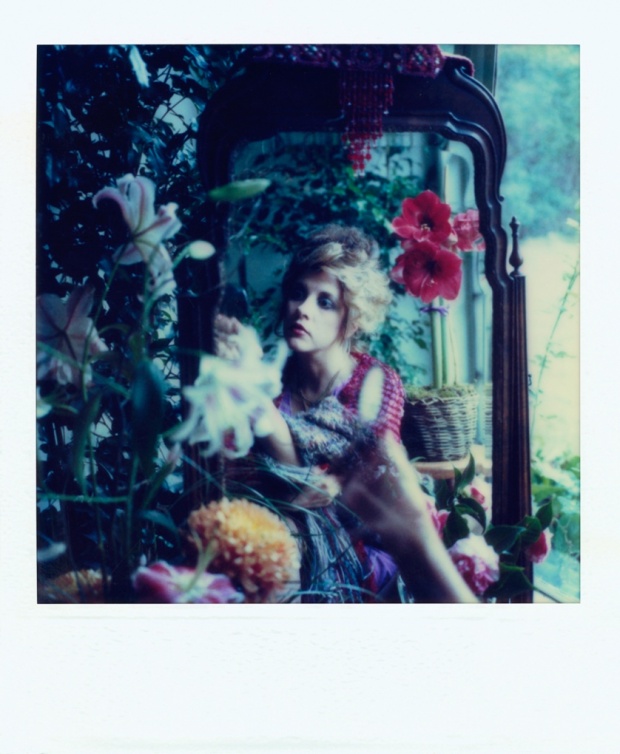
A collection of self-portrait Polaroids shot by Fleetwood Mac legend Stevie Nicks will go on display at a New York City gallery next month after languishing in a shoebox for decades.
“Some people don’t sleep at night. I’m one of those people,” Nicks said in a statement about the photographs. “I would begin after midnight and go until 4 or 5 in the morning. I stopped at sunrise, like a vampire. I never really thought anyone would ever see these pictures.”
The exhibit, 24 Karat Gold, curated by Eurythmics guitarist and Stevie Nicks collaborator Dave Stewart, accompanies a new album from Nicks, which will be released under the same title. The album, like the portraits, is a time capsule unearthed: the songs were written and demo-ed between 1969 and 1987, but re-recorded in recent months.
The Guardian spoke to Peter Blachley, owner of the Morrison Hotel Gallery, where the exhibit takes place next month, about the show.
[. . .]
She said that she took the pictures to “learn how to be a photographer”. To me, many of the images look very sophisticated, like the work of a pro. Is she just being modest?
I think she was really being her own muse in terms of how she wanted to see herself. She sort of opened up this wonderful treasure chest of clothing and furniture and accessories, and all the things that she would have had around her to create these little worlds of fashion, and how she saw herself.
From a photographic point of view, if you look at those Polaroids, at the photographs, of course this is before digital and today it’s a lot easier to take digital self-portraits because the cameras auto-focus, they auto-color, they do everything. Even those early Polaroid cameras that she was using with a cord – in the shot where she’s in the swimming pool you can see the cord in her hand as she’s clicking the shot – in every other shot she’s disguised it very well.
So I think even though she was learning and experimenting, she was very sophisticated in her knowledge of composition, her knowledge of framing, her knowledge of color. Because the shots are just beautifully art directed.
